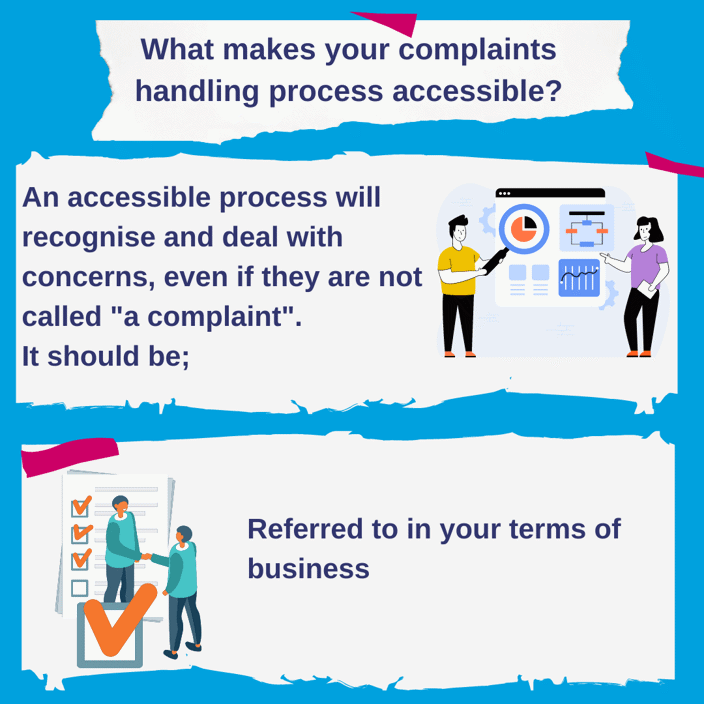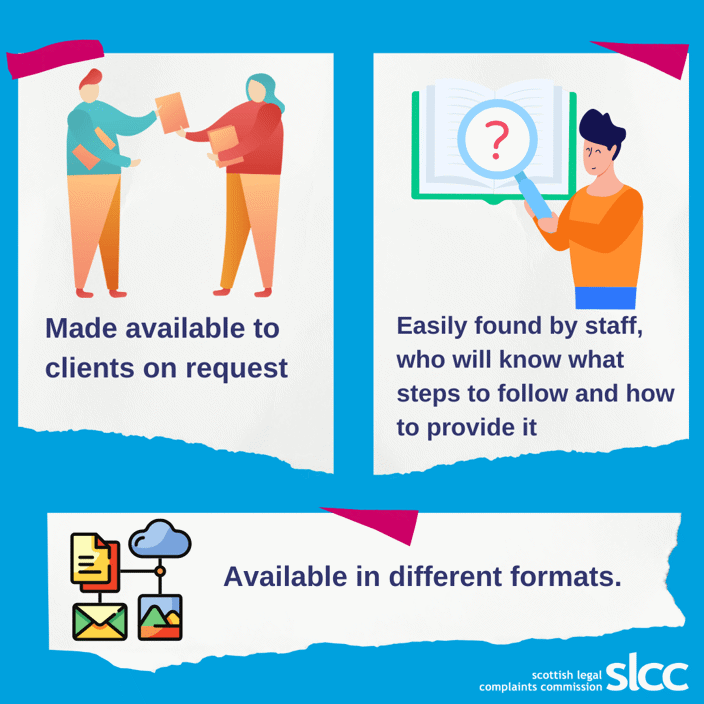Principle 1 - An accessible process
All your staff should know where to access your complaints policy, and know the correct steps to follow and advice to give to those asking about it.
A good complaints process should first of all be accessible. That covers the process, the language used and your own approach. All your staff should know how to access the policy and provide it freely on request. You should mention that you have a complaints process in your terms of business. Don't forget to signpost to the SLCC too. The Law Society of Scotland's guidance on Rule B5 sets out what you should include. Even if the concerns aren't called a complaint, recognise and deal with the concerns and be prepared to take a flexible approach. Never impose restrictions or suggest any penalty or charge to deal with the complaint. Use plain, concise and clear language in any discussion about a complaint. For further information, go to our website or our social media channels.
The Act governing legal complaints [The Legal Profession and Legal Aid (Scotland) Act, 2007] defines a complaint as “any expression of dissatisfaction”. Your complaints process needs to take that into account when setting out what you will regard as “a complaint” that triggers a referral to the CRM.

The Law Society Guidance on Rule B5 sets out the points to include in the complaints procedure document that you provide to clients. Clear communication is as vital to the complaints journey as it is to the work instructed, so this document should be concise, clear, unambiguous and written in plain language.
Remember that the Service Standards refer to communication that “is clear from the perspective of the client”. Depending on your clientele, you might want to have your procedure document available in more than one language.

Any complaints procedure should be flexible enough to take account of special needs and circumstances. (The SLCC Consumer Panel’s separate Guidance may help you reach the right balance).
Although your Terms of Business would already include a reference (and links) to the SLCC, you should also repeat this information in your complaints procedure document.
Tip: Third party complaints
The Law Society Guidance refers to sending copies of the complaints procedure to your clients. However, since you must also deal with third party complaints, you might consider drafting a separate version that can be sent out when third parties indicate “any expression of dissatisfaction”. This helps to make it clear to third parties how you will be able to handle their complaint, including that you cannot breach the duty of confidentiality towards your own client.